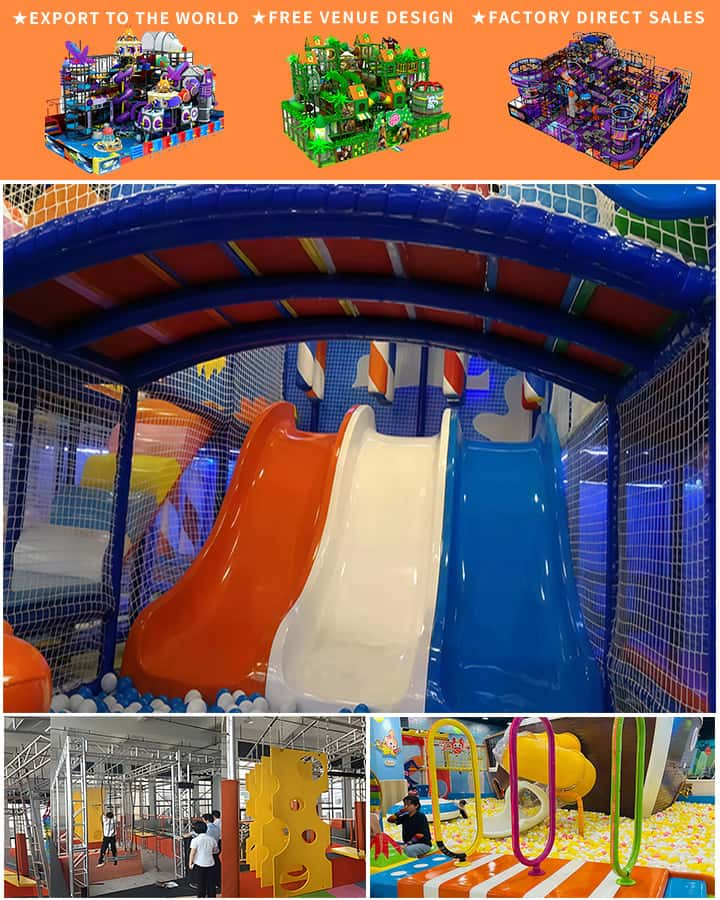In today’s fast-paced world, finding ways to keep children engaged, entertained, and healthy can be a daunting task, especially in small living spaces. Fortunately, creating a small indoor playground for kids and toddlers doesn’t have to be complicated or cost a fortune. With some creativity, planning, and a few smart purchases, you can transform even the smallest corner of your home into a fun and stimulating play area for your little ones.
Why an Indoor Playground?
An indoor playground offers numerous benefits:
- Safety and Security: Unlike outdoor playgrounds, indoor setups are safer as children are protected from traffic, harsh weather, and unknown adults.
- Convenience: You don’t need to travel to a park; the playground is right at home.
- Developmental Benefits: Playing indoors encourages physical activity, which is essential for healthy growth, and stimulates cognitive development through various activities and toys.
Key Components of a Small Indoor Playground
1. Climbing Walls and Slides
Small climbing walls and slides can make a significant impact in a compact space. They encourage physical activity, improve motor skills, and provide endless fun. Look for models specifically designed for smaller spaces to maximize your limited area without sacrificing safety.
2. Ball Pits
A ball pit is a timeless favorite for toddlers and young children. It not only provides sensory stimulation but also encourages imaginative play. Choose soft, colorful balls that are safe and easy to clean. A shallow pit filled with plastic balls can fit into a corner or under a low table, making it a perfect addition even for the smallest rooms.

3. Interactive Toys
To keep toddlers engaged, incorporate interactive toys such as musical instruments, shape sorters, and building blocks. These toys not only entertain but also help develop fine motor skills and hand-eye coordination.
4. Tunnels and Tents
Small tunnels and pop-up tents create opportunities for imaginative play. They can turn an ordinary room into a magical adventure land. Ensure the materials are sturdy and non-toxic, especially for younger children who might chew on them.
5. Soft Floor Mats
Safety first! Invest in soft, interlocking foam mats to cover the floor. These mats provide a cushion in case of falls and are much easier on tiny feet compared to hardwood or tile floors.
Creative Design Tips
Utilize Vertical Space: When space is limited, think vertically. Wall-mounted shelves, hanging toys, and multi-level play structures can add excitement without taking up precious floor space.
Multipurpose Furniture: Opt for furniture that doubles as storage or play areas. For instance, an ottoman with hidden storage can hold toys while serving as a climbing surface or seating area.
Color Coordination: Use bright colors and patterns to make the space inviting and stimulating. Consistency in color schemes helps create a cohesive look and can make the space appear larger.
Flexible Layouts: Consider modular play equipment that can be reconfigured as needed. This allows you to adjust the playground layout as your child grows and their interests evolve.
Safety First
While setting up your indoor playground, always prioritize safety:
- Non-Toxic Materials: Ensure all items are made from non-toxic materials, especially since toddlers may put things in their mouths.
- Sturdy Construction: Check for sturdy construction to prevent tipping or breaking.
- Regular Cleaning: Maintain cleanliness by regularly cleaning toys and mats to prevent germ buildup.
- Supervision: Always supervise young children during playtime to prevent accidents.
Conclusion
Creating a small indoor playground for kids and toddlers is a fantastic way to ensure they stay active, engaged, and happy, no matter the weather or space constraints. With careful selection of age-appropriate, safe, and stimulating components, your home can become an exciting haven for your little adventurers. Start small, prioritize safety, and watch as your little ones enjoy endless hours of fun and development right at home.




